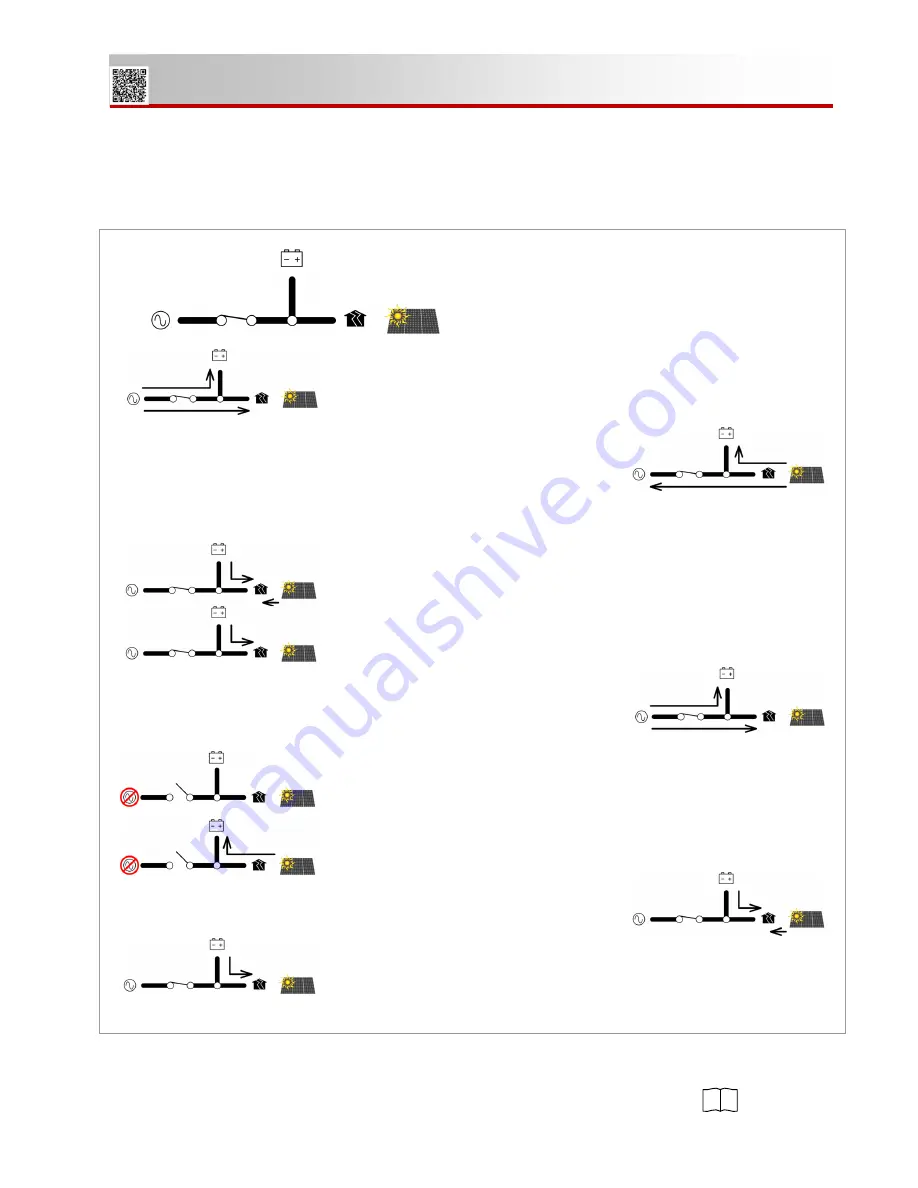
900-00277-01-001 Rev A
37
Operation
AC coupling (see page 35) may be used with ToU. In the example shown in Figure 24, the Mojave
inverter is used in conjunction with a GD inverter (with a PV array) on the protected loads panel.
The utility company’s peak rate occurs between 5 PM and 8 PM. The user sets
Simplified ToU
to
Enable
. The first
Peak rate period
block remains on
Weekdays
, but the
Start
time
is changed to
05:00 PM
. The
Stop time
is changed to
08:00 PM
. The system proceeds to operate.
Figure 24 ToU with AC Coupling
For illustrations of the respective flow of power between grid, each inverter, and batteries, see the
explanation of AC coupling on page 35. For more detailed descriptions of these functions, see the
applications note
AC Coupling with Time of Use (ToU) using the Mojave Inverter
.
6
PV and GD
INVERTER
On the first morning, which is cloudy, the PV array and the GD inverter have
little production. The Mojave inverter imports grid power normally. This power
is transferred to run the household loads. Some power is used to maintain
the batteries, which are kept in a fully-charged state.
At 12 PM, the sky clears. The PV array and the GD inverter begin producing power.
This power is used to support the loads. Excess power is available, which is sent to
the Mojave inverter. Some power is used to maintain the batteries. The rest continues
to the grid and is sold normally.
NOTE
: The Mojave inverter is not exporting this power; it is simply acting as a conduit
for the GD inverter to export power.
At 5 PM, the inverter enters the peak rate period. The Mojave inverter ceases importing
any grid power. By this time, the GD inverter is producing much less power. It is no
longer exporting to the grid and is only producing part of the power for the household
loads. The Mojave inverter supplies the rest of the needed power from the batteries.
During the peak rate period, after sundown, the GD inverter has stopped producing power.
The Mojave inverter supplies all needed power from the batteries.
At 8 PM, the peak rate period ends, and utility rates drop again. The inverter begins
importing grid power to run the loads. It also recharges the batteries to 100%. This
continues into the next morning.
During the second morning, a utility outage occurs. The Mojave inverter loses grid power
and begins producing power from the batteries instead. The output from the Mojave
inverter acts as the “grid” to the GD inverter so that it can remain active.
During this period, the PV array and GD inverter continue producing power, which is used
to support the protected loads. Excess power is available, which is sent to the Mojave
inverter to maintain the batteries.
Grid power is restored at 4:30 PM. The GD inverter and Mojave inverter have supplied
enough power to support the loads during the blackout. The batteries remain fully charged.
240 Vac
At 5 PM, the inverter enters the peak rate period and ceases importing grid power. The
Mojave inverter and GD inverter support the loads. After sundown, the Mojave inverter
uses battery power to support the loads by itself. The cycle proceeds normally from there.
6
















































